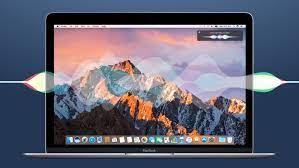10 Things You Should Know about the Mac Operating System
There are a lot of things that people don’t know about the Mac operating system. Here are 10 things that you should know about it:
1. The Mac operating system is based on a Unix foundation. This means that it is extremely stable and reliable.
2. The Mac operating system is very easy to use. It has a simple, elegant user interface that is easy to navigate.
3. The Mac operating system is very versatile. It can be used for a wide variety of tasks, from everyday productivity to professional graphic design and video editing.
4. The Mac operating system is constantly evolving and improving. Apple releases free updates on a regular basis, adding new features and improvements.
5. The Mac operating system is very secure. It includes built-in security features that protect your data from malware and other threats.
6. The Mac operating system comes with a wide range of built-in applications. These include everything from a web browser to a comprehensive word processing suite.
7 . The Mac operating system can be easily customized to your own preferences. There are a wide variety of settings that can be adjusted to suit your needs. For example, you can change the default web browser or set up parental controls. You can also install third-party applications to add even more functionality. 8 The Mac App Store offers a convenient way to discover and download new apps for your Mac. There are thousands of
advantages and disadvantages of the apple mac operating system
There are many reasons to choose the Apple Mac operating system (OS) over other options, but it’s not without its drawbacks. Here are 10 things you should know about the Mac OS before making your decision.
Advantages:
1. User-Friendly Interface: One of the biggest advantages of the Mac OS is its user-friendly interface. Everything is designed to be simple and easy to use, from the dock at the bottom of the screen to the Finder tool for managing files.
2. Robust Security: The Mac OS is known for its robust security features, which help keep your computer safe from viruses and malware.
3. Regular Updates: Apple regularly releases updates for the Mac OS, which keep it running smoothly and add new features and security enhancements.
4. Wide range of software: There is a wide range of software available for the Mac OS, including productivity suites like Microsoft Office, creative applications like Adobe Photoshop, and many more.
5. Built-in media tools: The Mac OS comes with built-in media tools for playing and managing music, photos, and videos.
6. Easy file sharing: The Mac OS makes it easy to share files with other computers on your network or over the internet.
Disadvantages:
1. Limited hardware choices: Unlike Windows, there are only a handful of companies that make computers that can run the Mac OS. This can make it
all apple mac operating systems
The Mac operating system is a line of proprietary operating systems developed by Apple Inc. for use on its Macintosh line of computer systems. The Mac OS was first introduced in 1984 with the release of the original Macintosh and has since been updated several times, most recently with the release of macOS Sierra in 2016.
While the Mac OS is not as widely used as Windows, it does have a loyal following among users who appreciate its simple and intuitive design. In addition, the Mac OS is known for its stability and reliability, two important factors for users who rely on their computers for mission-critical tasks.
Here are 10 things you should know about the Mac operating system:
1. The Mac OS is a proprietary operating system developed by Apple Inc. specifically for use on its Macintosh line of computers.
2. The first version of the Mac OS was released in 1984 with the launch of the original Macintosh computer.
3. The most recent version of the Mac OS is macOS Sierra, which was released in 2016.
4. While the Mac OS is not as widely used as Windows, it does have a loyal following among users who appreciate its simple and intuitive design.
5. In addition to being user-friendly, the Mac OS is also known for its stability and reliability – two important factors for users who rely on their computers for mission-critical tasks.
6. One of the unique features of the Mac OS is its Dock – a
Apple changes the name of the mac operating system
Apple has changed the name of its popular Mac operating system from OS X to macOS. The new name reflects the company’s move to unify its various operating systems under one banner, including iOS for its iPhone and iPad devices.
The change comes as Apple prepares to release the latest version of the Mac operating system, dubbed Sierra, later this year. It also marks a significant shift in strategy for the Cupertino, California-based company, which has long positioned the Mac as a premium alternative to Microsoft’s Windows PCs.
Under its new strategy, Apple is aiming to make its various operating systems work more seamlessly together, allowing users to move between different devices. The company has already begun implementing this strategy with its iCloud service, which allows users to access their files and data on any Apple device.
With the new macOS Sierra, Apple is taking this integration a step further by allowing users to unlock their Macs with their iPhones or Apple Watches. The company is also introducing a new feature called Universal Clipboard, which will allow users to copy and paste content between their Macs and iOS devices.
These are just some of the changes coming to the Mac with macOS Sierra. For more information on the new operating system, be sure to check out our full coverage.
what is the iPhone operating system?

The iPhone operating system is a closed, proprietary system that is designed and controlled by Apple. Unlike other mobile operating systems, such as Android, the iPhone OS is not open source, which means that it cannot be modified or customized by third-party developers. Apple maintains strict control over the iPhone platform and only allows approved apps to be available on the App Store.
The iPhone operating system is based on Darwin, a Unix-like open-source operating system. Darwin forms the core of Apple’s macOS and iOS operating systems. The iPhone operating system has been built on top of Darwin with a number of additional proprietary components.
The user interface of the iPhone operating system is based on direct manipulation using multi-touch gestures. Gestures are used to perform common tasks, such as zooming in on web pages and images, scrolling through lists, and opening applications. The iPhone also supports voice control and Siri, a voice assistant that can perform tasks such as sending messages, setting reminders, and conducting web searches.
The home screen of the iPhone consists of a grid of icons that can be arranged into folders. The home screen can be customized with wallpapers and widgets. Notifications are displayed in a banner at the top of the screen when they occur.
The Control Center is accessed by swiping up from the bottom of the screen. It provides quick access to frequently used settings and features, such as Wi-Fi, and Bluetooth, and does not disturb mode, brightness, and camera.
Apple iPhone operating system
The iPhone operating system is a mobile operating system developed by Apple Inc. and distributed exclusively for Apple hardware. It is the operating system that presently powers many of the company’s mobile devices, including the iPhone, iPad, and iPod Touch.
It is the second most popular mobile operating system globally after Android.
Originally unveiled in 2007 for the first-generation iPhone, iOS has since been extended to support other Apple devices such as the iPod Touch (September 2007) and the iPad (January 2010).
As of June 2016, Apple’s App Store contained more than 2 million iOS applications, 725,000 of which are native to iPads. These apps have collectively been downloaded more than 130 billion times.
The iOS user interface is based on direct manipulation, using multi-touch gestures. Interface control elements consist of sliders, switches, and buttons. Interaction with the OS includes gestures such as swiping, tapping, pinching, and reverse pinching, all of which have specific definitions within the context of the iOS operating system and its multi-touch interface.
In iOS 11, new features include a redesigned Control Center, a Files app that gives access to a file manager on the device itself rather than through iCloud Drive or other cloud services; ARKit for the development of augmented reality apps; drag and drop support within apps; a redesigned App Store; Siri improvements including translation into multiple languages; improved Apple Maps with indoor mapping for malls and airports among other additions.


